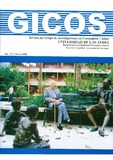Mostrar el registro sencillo del ítem
Elaboración y validación de un instrumento biopsicosocial para el abordaje integral y sistematización en medicina de familia
| dc.rights.license | http://creativecommons.org/licenses/by-nc-sa/3.0/ve/ | |
| dc.contributor.author | Castillo, David | |
| dc.contributor.author | Alonso, Sara | |
| dc.contributor.author | Salinas, Pedro José | |
| dc.contributor.author | Mejia de Díaz, María Arnolda | |
| dc.date.accessioned | 2011-05-05T19:59:34Z | |
| dc.date.available | 2011-05-05T19:59:34Z | |
| dc.date.issued | 2011-05-05T19:59:34Z | |
| dc.identifier.uri | http://www.saber.ula.ve/handle/123456789/32998 | |
| dc.description | Revista del grupo de investigaciones en Comunidad y Salud. Vol. 1 N° 1 marzo 2008. mérida- venezuela | es_VE |
| dc.description.abstract | Se propone la colaboración y validación de un instrumento BIOPSICOSOCIAL (DASA-B PS). El cual proporciona información valida y confiable cuando se aplica adecuadamente, que discrimina a los usuarios sintomáticos de los asintomáticos y proporciona valores numéricos sensibles que determinan el grado de severidad de riesgo correlacionado con cada uno de los factores (biológico, psicológico y social). Se aplicaron 140 encuestas y se definió como muestra a 80 personas que cumplieron con todos los criterios para la validación del constructo. Para su validación, se aplicó el mismo procedimiento en los Ambulatorios urbanos tipo III y se realizó un análisis factorial de componentes principales y rotación varimax en todos los 80 reactivos de la versión inicial del constructo, eliminando los reactivos con carga factorial compartida quedando 24 reactivos que presentaron las mayores cargas factoriales y que encajaban teóricamente en el factor (biológico, psicológico y social) al cual pertenecían. La parte final del instrumento, con tres factores, explicó el 52.6% de la varianza total en una rotación convergente de 6 interacciones. Finalmente, se aplicó un análisis de consistencia interna a través del Coeficiente Alfa de Crornbach, mostrando un índice de confiabilidad de 0.88. Para la validez discriminante del instrumento, el grupo de personas sintomáticas fue comparado con el grupo de personas asintomáticas, encontrándose diferencias significativas en las personas sintornáticas en cada uno de los factores como en la escala total. | es_VE |
| dc.language.iso | es | es_VE |
| dc.rights | info:eu-repo/semantics/openAccess | |
| dc.subject | Instrumento biopsicosocial | es_VE |
| dc.subject | Medicina de Familia | es_VE |
| dc.subject | Sintornáticos | es_VE |
| dc.subject | Asintomáticos | es_VE |
| dc.title | Elaboración y validación de un instrumento biopsicosocial para el abordaje integral y sistematización en medicina de familia | es_VE |
| dc.type | info:eu-repo/semantics/article | |
| dc.description.abstract1 | In this paper the development and validation of a BIOPSYCHOSOCIAL (DASA-BPS) instrument is proposed. This instrument provides valid and reliable information when it's properly applied. This instrument is able to differentiate between symptomatic and asymptomatic users and to present sensitive numerical values which determine the degree of risk severity correlated with each one of the factors (biological, psychological and social.) 140 polls were applied and 80 people. which comply with all criteria for validation of the construct. constitute the sample universe. In order to validate the instrument, the same procedures used at a type III urban outpatient department were used. Besides. factorial analysis for principal components and a varimax rotation were carried out in all 80 reactive of the construct's preliminary version; eliminating reactives with shared load factor leaving 24 reactives presenting the higher load factor which theoretically fit in the factor (biological, psychological and social) were they belong. The final part of' the instrument, with three factors. was useful to explain the 52.6%of total variation in a convergent rotation of 6 interactions. Eventually, and internal consistency analysis through the Cronbach's Alpha Coefficient. showing a reliability index of 0.88 was applied. With respect to the discriminating validity of the instrument, the symptomatic group of people was compared against the asymptomatic group, finding significant differences in symptomatic individuals on each one of the factors. as well as on the total scale. | es_VE |
| dc.description.colacion | 7 - 14 | es_VE |
| dc.description.email | castruji@ula.ve | es_VE |
| dc.description.email | saraalo@yahoo.com | es_VE |
| dc.description.email | psalinas@ula.ve | es_VE |
| dc.description.email | mariarno@hotmail.com | es_VE |
| dc.publisher.pais | Venezuela | es_VE |
| dc.subject.keywords | Biopsychosocial instrument | es_VE |
| dc.subject.keywords | Family medicine | es_VE |
| dc.subject.keywords | Symptomatic | es_VE |
| dc.subject.keywords | Asymptomatic | es_VE |
| dc.subject.thematiccategory | Medicina y Salud | es_VE |
| dc.subject.tipo | Artículos | es_VE |
| dc.type.media | Texto | es_VE |
Ficheros en el ítem
Este ítem aparece en la(s) siguiente(s) colección(ones)
-
Articulos, Pre-prints (Laboratorio de Taxonomía y Ecología de Insectos)
Articulos, Pre-prints del Laboratorio de Taxonomía y Ecología de Insectos


